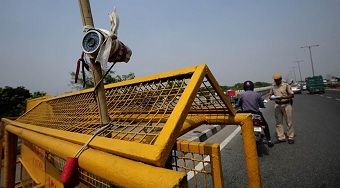The Delhi government has decided to take additional measures such as installing alarm devices in boxes housing CCTVs after coming across instances of theft and damage to the surveillance system at around 75 locations in the city.
The government had started installing 1.4 lakh CCTVs in public places and residential areas of the capital in January 2019. The process has not been completed yet, PWD Minister Satyendar Jain informed the Delhi Assembly, attributing the delay to assembly elections and the pandemic.
Jain’s office recently came across instances of theft and destruction of the surveillance cameras in various areas. Apart from the cameras, hard disks containing the recorded footage and SIM cards attached with the CCTVs were also stolen in some places, a senior Delhi government official said. Jain’s office has now instructed the CCTV wing of the department and the vendor Bharat Electronics Limited (BEL), which is getting the cameras installed, to equip the cameras and the associated devices with an “additional lock system”.
Officials have been asked not to grant permission to anyone other than confirmed personnel from BEL to carry out repair work of the cameras. “As per the contract, BEL is responsible for any kind of theft of CCTV equipment,” the official quoted above added. According to the SOP that governs the surveillance project, the ownership of the cameras lies with the PWD, while their feed is provided to RWA representatives, local police and area DCP. The SOP had sparked privacy concerns due to the lack of oversight mechanism to prevent misuse.
As a result, RWAs have also been instructed to ensure that no one touches the cameras in the absence of any representative from the associations. “A system should be placed where, if anyone tries to open the box, an alarm will ring and the RWA should immediately inform the authorities concerned,” says one of the new clauses.








